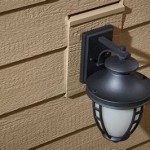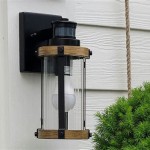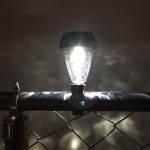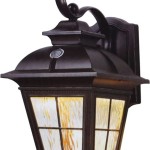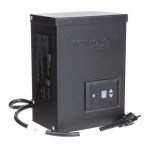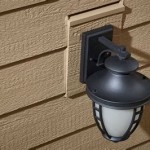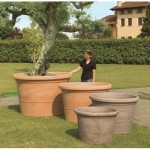Designing Effective Outdoor Lighting
Outdoor lighting serves multiple purposes, extending the usability of outdoor spaces after dark, enhancing safety and security, and accentuating the aesthetic features of a property. Designing effective outdoor lighting requires careful consideration of various factors, including the intended purpose of the lighting, the architectural style of the building and landscape, and the impact on the surrounding environment. A well-designed outdoor lighting plan balances functionality with aesthetics, creating a welcoming and secure atmosphere while minimizing light pollution.
The initial phase in outdoor lighting design involves assessing the needs and objectives of the space. This includes determining the areas that require illumination, such as pathways, entrances, patios, decks, and gardens. It also involves identifying the desired level of brightness for each area. High-traffic areas like walkways and steps necessitate brighter illumination for safety, whereas areas designed for relaxation or entertainment might benefit from softer, more ambient lighting. The architectural style and landscape design should also be considered to ensure that the lighting complements the overall aesthetic.
Understanding Lighting Layers
A foundational principle in outdoor lighting design is the concept of layering. This involves using multiple types of lighting to create depth and dimension within a space. Layering typically includes three primary types of lighting: ambient, task, and accent lighting. Ambient lighting provides general illumination and creates a base level of light throughout the space. Task lighting is focused and directed towards specific areas to facilitate activities such as cooking, dining, or reading. Accent lighting is used to highlight architectural features, landscaping elements, or decorative objects.
Ambient lighting can be achieved through various fixtures, including post lights, string lights, and strategically placed spotlights. The key is to provide a soft, even glow that eliminates harsh shadows and creates a comfortable atmosphere. Task lighting is essential for areas where specific activities take place. For example, outdoor kitchens require bright, focused lighting over countertops and grills. Decks and patios benefit from table lamps or pendant lights that provide sufficient illumination for dining or socializing. Accent lighting is critical for adding visual interest and highlighting the unique characteristics of the property. This can be accomplished using spotlights, uplights, or downlights to illuminate trees, sculptures, fountains, or architectural details.
Properly layering outdoor lighting ensures that the space is both functional and visually appealing. It avoids the pitfalls of relying solely on one type of lighting, which can result in a flat and uninspired appearance. By combining different types of lighting, designers can create a dynamic and inviting outdoor environment that meets the specific needs of the users.
Selecting Appropriate Lighting Fixtures
The selection of appropriate lighting fixtures is crucial for achieving the desired aesthetic and functional goals. Fixtures should be chosen based on their performance characteristics, durability, and aesthetic appeal. The specific type of fixture will depend on the intended application and the desired lighting effect. Common types of outdoor lighting fixtures include spotlights, floodlights, path lights, post lights, wall sconces, and submersible lights. Each type of fixture has unique characteristics and is suited for specific applications.
Spotlights are ideal for accent lighting, as they provide a focused beam of light that can be directed towards specific objects or features. Floodlights are used for general illumination and are often employed to light up large areas such as driveways or backyards. Path lights are designed to illuminate walkways and pathways, providing safety and guidance after dark. Post lights are typically installed along driveways or walkways and provide both ambient lighting and visual interest. Wall sconces are mounted on walls and provide a decorative element while also providing ambient or task lighting. Submersible lights are designed for use in water features such as ponds or fountains, creating a dramatic and visually appealing effect.
In addition to the type of fixture, it is important to consider the materials used in its construction. Outdoor lighting fixtures are exposed to the elements and must be durable and weather-resistant. Common materials include aluminum, stainless steel, copper, and composite materials. Aluminum is lightweight and corrosion-resistant, making it a popular choice for outdoor fixtures. Stainless steel is highly durable and resistant to rust, making it ideal for coastal environments. Copper adds a touch of elegance and develops a unique patina over time. Composite materials offer a balance of durability, affordability, and aesthetic appeal.
Optimizing for Energy Efficiency and Sustainability
Energy efficiency and sustainability are increasingly important considerations in outdoor lighting design. Traditional incandescent lighting is energy-intensive and has a short lifespan, making it less environmentally friendly than newer lighting technologies. Light-emitting diodes (LEDs) are now the dominant technology in outdoor lighting due to their energy efficiency, long lifespan, and versatility. LEDs consume significantly less energy than incandescent or halogen lamps and can last for tens of thousands of hours, reducing the need for frequent replacements. They also offer a wide range of color temperatures and light output levels, allowing for precise control over the lighting environment.
In addition to selecting energy-efficient light sources, it is important to consider other strategies for optimizing energy use. Motion sensors can be used to automatically turn lights on when movement is detected and off when the area is unoccupied. This can significantly reduce energy consumption, especially in areas that are not frequently used. Timers can also be used to schedule lighting, ensuring that lights are only on when needed. Dimming controls allow for adjusting the brightness of the lights, further reducing energy consumption. Using shielded fixtures that direct light downwards minimizes light trespass and light pollution, contributing to a more sustainable lighting design.
Designing for sustainability also involves considering the impact of lighting on wildlife. Excessive outdoor lighting can disrupt the natural behavior of nocturnal animals, affecting their feeding, breeding, and migration patterns. It is important to minimize light pollution by using low-intensity lighting, shielding fixtures, and avoiding upward-pointing lights. Choosing warm color temperatures (2700K to 3000K) is also preferable, as they are less disruptive to wildlife than cooler color temperatures. By carefully considering the environmental impact of outdoor lighting, designers can create a sustainable and responsible lighting plan that benefits both humans and the natural world.
Proper wiring and installation are paramount for safety and longevity. Outdoor electrical systems should be installed by licensed professionals adhering to local electrical codes. Consider using weatherproof wiring and connections, as well as ground fault circuit interrupters (GFCIs) to prevent electrical shocks. Regular maintenance, including cleaning fixtures and replacing bulbs, can ensure that the system continues to operate efficiently and safely. A well-maintained outdoor lighting system not only provides illumination but also contributes to the overall value and curb appeal of the property. By addressing these design considerations, one can create an outdoor lighting scheme that is functional, aesthetically pleasing, and environmentally responsible.

Outdoor Landscape Lighting Design Tips Ideas Environmental Designs

How To Choose A Landscape Lighting Design That Fits Your Home

Outdoor Landscape Lighting Design Tips Ideas Environmental Designs
Outdoor Lighting Ideas 10 Designs Architecture Design

13 Outdoor Lighting Tips For A Safe And Inviting Landscape

Outdoor Lighting Dezeen Showroom

Lighting Design Considerations For Outdoor Entertaining

50 Garden Lights Ideas And Designer Fixtures For Your Outdoor Space

Garden Lighting Design Installation

A Guide To Outdoor Lighting Design Rtf Rethinking The Future
Related Posts

